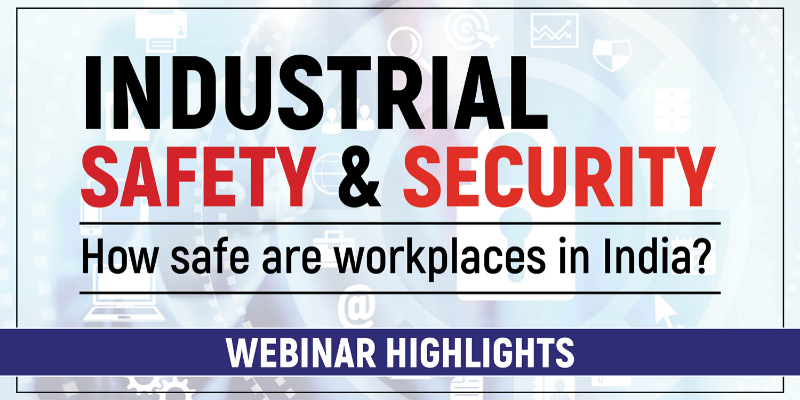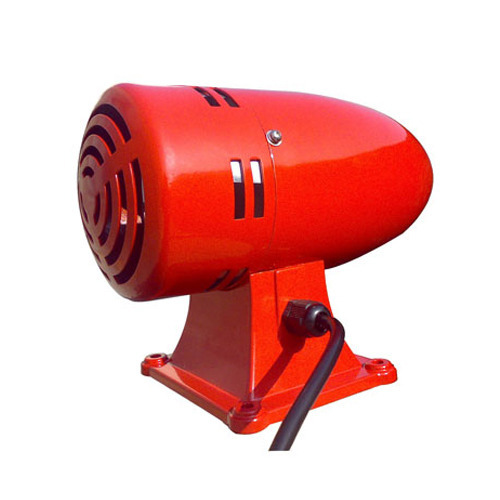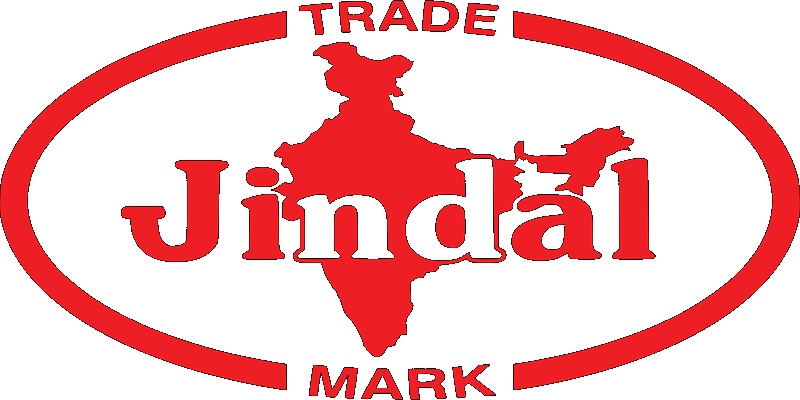Schedule a Call Back
Will the new Labour Code make industries safer?
 Industry News
Industry News- Apr 10,20

According to data from the Labour and Employment Ministry, 3,562 workers died in factory accidents across India between 2014 and 2016, and more than 51,000 were injured in that period. This works out to an average of three deaths and 47 injuries every single day. In India, around 80% of the estimated 465 million-strong workforce are not protected by the existing health and safety legal framework. At the same time awareness about safety and compliance to standards are very low in the country.
As part of labour reforms, the Union Government has proposed subsuming the 44 labour laws into Four Labour Codes - on wages, industrial relations, social security and occupational safety, health and working conditions. Will the proposed Code on "occupational safety, health and working conditions" improve to industrial and occupational safety scenario in the country?
Against this background, Industrial Products Finder (IPF) hosted a webinar on April 9 to discuss the implications of the new Labour Code and a host of other issues associated with the industrial safety in the country.
The webinar - which was moderated by Pratap Padode, Editor-in-Chief, Industrial Products Finder (IPF) and President, FIRST Construction Council - included panellists like Hemant Sethi, Country Head, British Safety Council India; Gaurang Baxi, Partner, SAFETY4BIZ Consultants LLP, and EHS Advisor, DNV GL; Prashant Singh, Business Head - Compliance and Payroll Outsourcing, TeamLease Services Limited; Arun Nandi, Sr Manager - HSE (Ankleshwar plant), Covestro (India) Pvt Ltd; and Srinivasa Sai Nanduru, Senior Safety Expert for Metro Rail Project in Mumbai, Louis Berger.
In general, it is believed that labour laws are complex with a company needing to adhere to 44 different types of labour laws in the country. At times, it is difficult to reconcile these laws and hence, given an opportunity, companies try to avoid employing labour. So, will the new Labour Code lead to better compliance?
“Principle of safety is simplicity. Labour code on safety is a step in the right direction as it simplifies the approach towards health and safety by merging 13 labour laws. With this synergy will be achieved and it will ease the process of implementation. However, strong enforcement mechanism will be needed to have desired effect on the ground,” said Gaurang Baxi.
Srinivasa Sai Nanduru added, “Labour code aims to simplify, amalgamate and rationalise the provisions of existing labour laws while providing necessary flexibility for making rules and regulations in tune with the changing industrial scenario. Labour code will simply process and make procedure hassle-free. This will go a long way in improving safety standards.”
Explaining the importance of the role of top management in ensuring workplace safety, Srinivasa Sai Nanduru said, “Commitment and sincerity of top management are must for compliance to safety standards and also to ensure safety measures are followed at various level. They are also responsible to provide adequate resources (manpower, equipment, technologies, etc) to the team entrusted with the responsibility of safety at the plant/project site. High safety standards cannot be achieved without the active involvement of top management.”
Many industries view safety standards as a cost rather than a benefit. Instead of adopting the best safety practices, they attempt to meet the minimum legal requirements on safety. At the same time, irresponsible behaviours can also contribute to accidents at workplace. Hence, it is important to promote safe behaviours to develop an injury-free culture in organisations.
Hemant Sethi explained, “Behaviour of the workforce is the fundamental issue that needs to be addressed for ensuring safety at workplace - especially when workers come from diverse background. It's a challenge and steps should to be taken to minimise risk at every level. For some companies cost is a major concern when it comes to adherence to safety standards. However, they must understand that safety is not cost, but investment. Companies are realising this, which is evident from the fact that the number of companies opting for safety audits is going up.”
Safety audit is done by critical examining the entire industrial operation to identify potential hazards and levels of risk. Arun Nandi said, “Safety audit helps in planning and implementation of proper Occupational Safety and Health (OSH) standards, which are in line with the legal compliances. It also takes into consideration the behaviour aspect of the people. An accident arising from unsuspected risks can have far reaching effects on the commercial viability of a company. Hence, safety audits safeguard not just employees and plants & machinery, but also the company.”
Speaking on the role of personal protective equipment (PPE) in ensuring worker’s safety, Arun Nandi said, “PPE is the last resort to protect workers from injury. Role of supervisor is also important for ensuring proper procedures are followed while using PPE to enforce safe work practices.”
Regulations are complex in India. It is estimated that a firm has to adhere to over 58000 compliances with about 27000 compliances related to labour. For unorganised sector (accounting for about 95 per cent of the industry) adhering to safety and security standards is a big task.
According to Prashant Singh, safety training is important for an effective workplace environment to minimise accidences and injuries. “Many companies have developed training modules (both offline as well as online) for better adherence to safety standards and compliance. Companies are also adopting digital tools (like gamification) into their training programme to improve company-wide safety compliance. At the same time, there is a need to move away from paper driven, ad hoc and manual processes to paperless, planned and automated systems for ease of compliances to safety norms,” he added.
A worker, being the mainstay of every manufacturing unit, is a crucial human resource whose wellbeing is vital, not only for his family, but also for the industry. It is said that India has the best safety standards and safety protocols for industrial safety in the world, but very rarely they are visible at the ground level in most of the factories across the country.
Gaurang Baxi believes that policy makers need to coordinate efforts to raise health and safety awareness among students through education institutions. “This will help ingrain the culture of safety early in the minds of people. Industrial scenario is changing fast with emergence of new technological innovations. Safety regulations/standards have to be updated in dynamic manner in line with the changing ground realities,” he added.
ALSO READ: MSME technology centres help govt in fight against Covid 19
ALSO READ: Top four tips to manage supply chain in the times of COVID 19
Related Stories

MIT-WPU Develops Patented Passive Hybrid Cooling System for EV Batteries
The integration of a custom-engineered nanofluid, enhanced with thermally conductive nanoparticles and low-boiling-point liquids, enables rapid heat extraction from battery hotspots.
Read more
Best practices to ensure safer work at heights across industries
As industries expand infrastructure, ensuring safe work at height is vital. Kamarajan M, Head of Education, British Safety Council, India, outlines essential measures to reduce fall risks and safegu..
Read more
Why is Workmen Compensation Insurance Essential for Both Employers & Employees?
A well-designed workmen compensation insurance plan helps employers stay legally compliant while providing vital support to employees during unexpected events.
Read moreRelated Products

Grey Polka Dash Board Covers
Elegant Auto Accessories offers a wide range of grey polka dash board covers.

Fire Protection - Industrial Sirens
Amit Safety Enterprises offers a wide range of fire protection industrial sirens.
Read more
Fire Alarm Sysytem
Nayakson Security Systems is offering a range of fire alarm, intrusion alarm and gas alarm systems.















